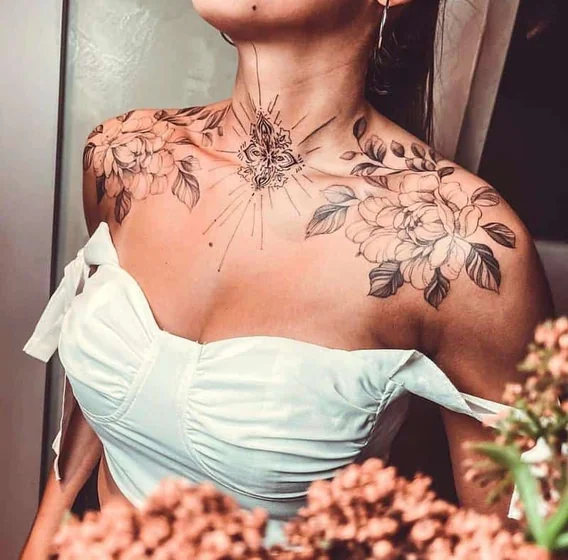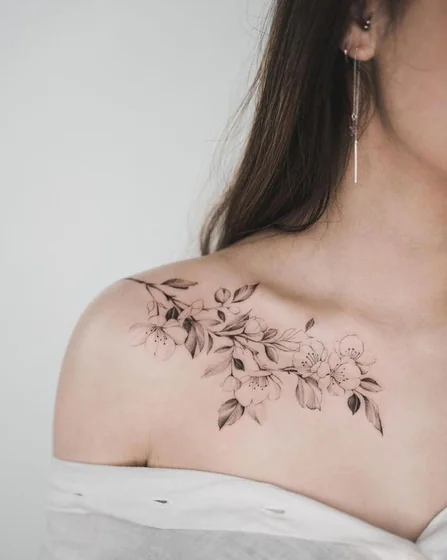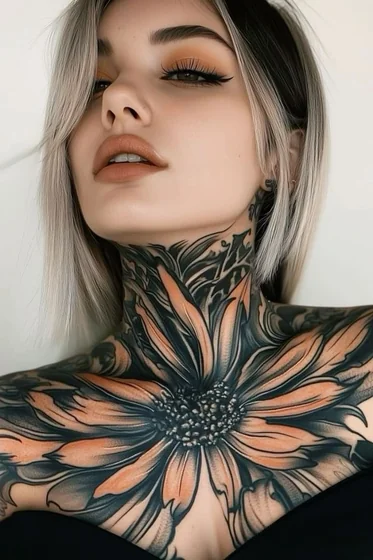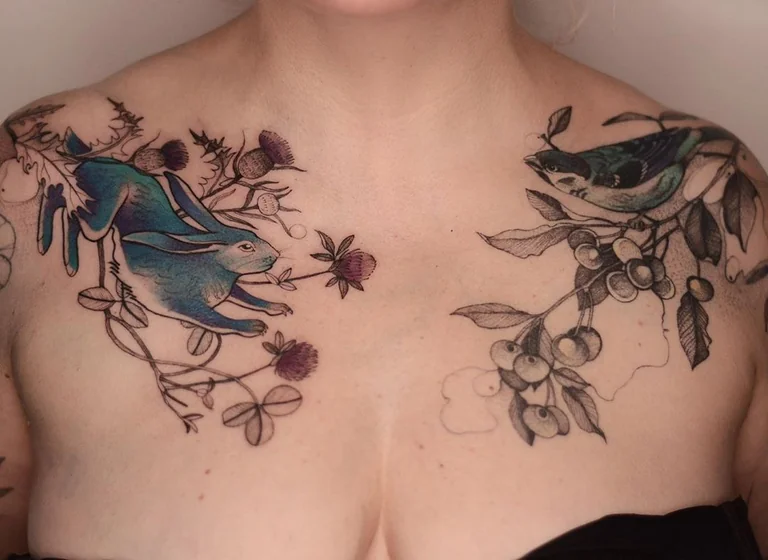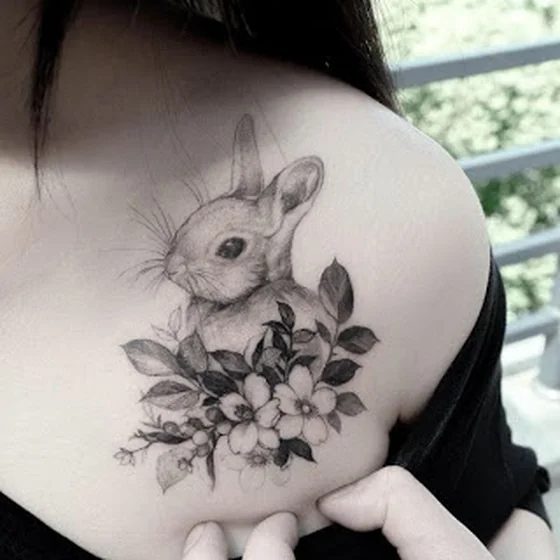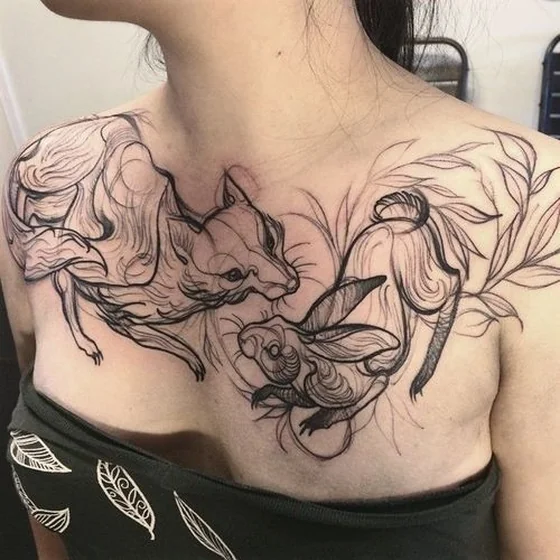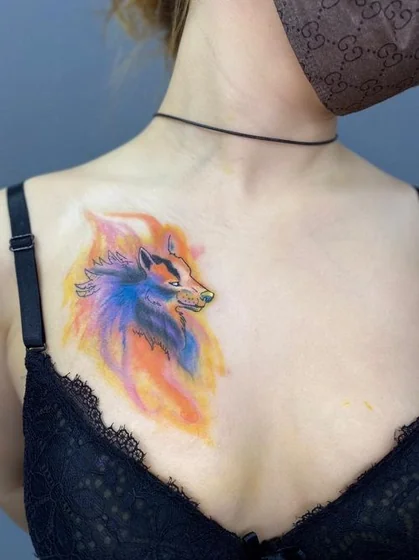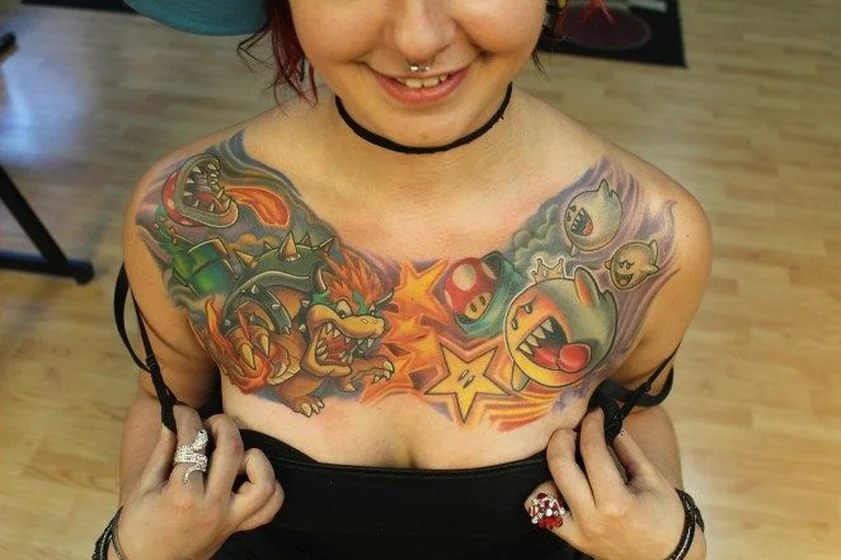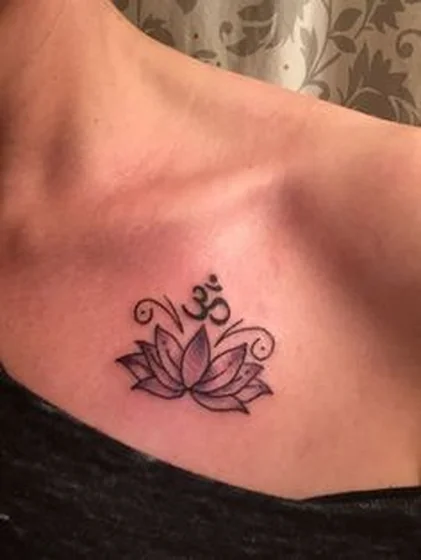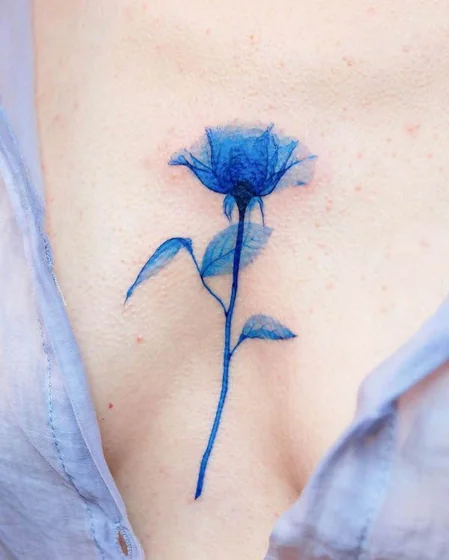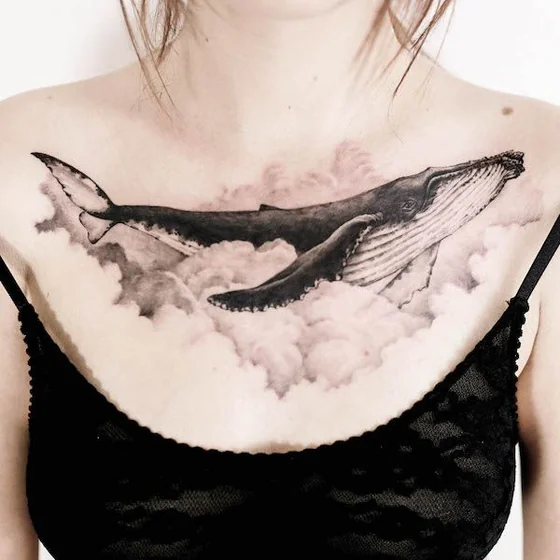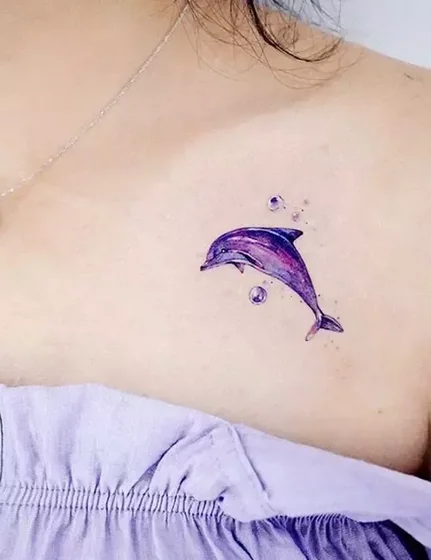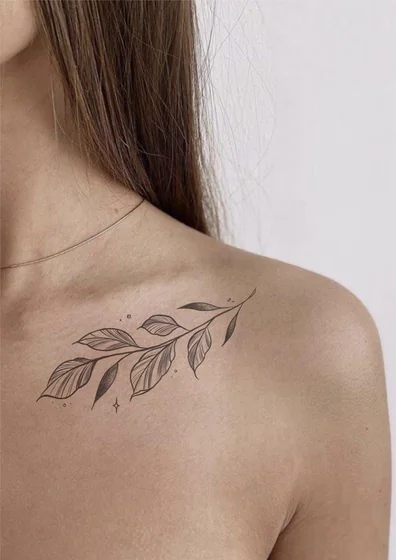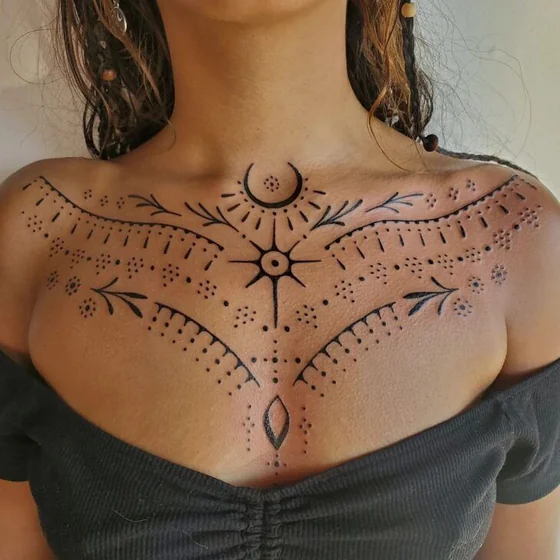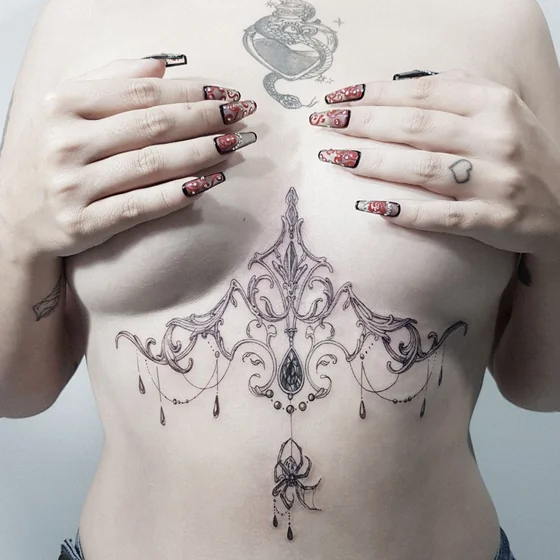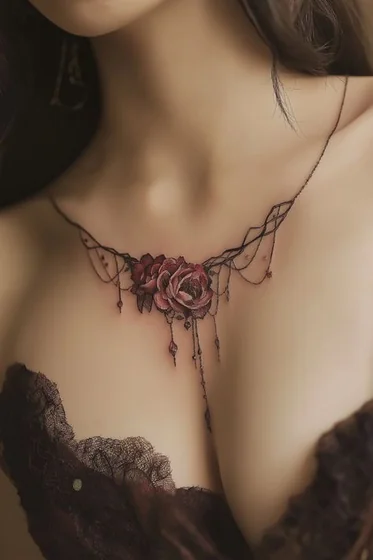Filters
Tattoo Ideas
3D Virtual Try-On
Stop guessing. See exactly how your tattoo will look on your body. Upload your design, and visualize it instantly.
- Realistic 3D skin simulation
- Multiple body positions
- Upload your own design
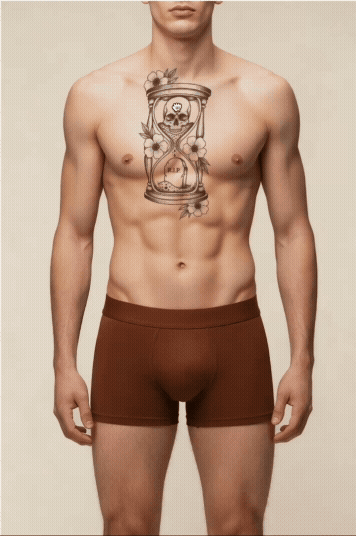
Chest tattoos for women serve as sophisticated body art that enhances natural curvature while offering a unique balance between high-impact visibility and complete concealment. Whether draping across the collarbones or resting intimately on the sternum, these designs utilize the body's symmetry to create an aesthetic flow that complements the female form rather than overpowering it.
Strategic Placement: Navigating Anatomy
Choosing the right zone on the upper torso is critical for comfort and visual impact. Consider these three primary placements:
-
The Sternum (Solar Plexus):
- Visual Effect: Creates striking vertical symmetry between the breasts.
- Best For: Elongated designs like floral stems, chandeliers, or Unalomes.
- Pain Scale: 8/10 (High sensitivity due to thin skin over bone).
-
The Underboob:
- Visual Effect: Follows the natural breast curve; visible only in swimwear or crop tops.
- Best For: Mandalas, crescent moons, or script that requires privacy.
- Pain Scale: 7/10 (Sensitive, but fleshy areas offer some cushion).
-
Upper Chest & Collarbone:
- Visual Effect: Frames the face and neck; interacts beautifully with jewelry.
- Best For: Script, flying birds, or botanical vines extending to the shoulder.
- Pain Scale: 5/10 (Generally more manageable than the sternum).
Healing Timeline & Lingerie Compatibility
Recovering from a chest tattoo requires specific wardrobe adjustments to prevent ink blowout or irritation.
- The "No-Wire" Rule: You must avoid underwire bras for 10-14 days. The rigid wire causes friction that can blur fresh lines.
- Alternative Support: Opt for soft bralettes, nipple covers, or going braless during the initial healing phase.
- Sleep Position: Back sleeping is mandatory for the first week to avoid pressing the fresh tattoo into sheets or compressing the skin.
Intimacy and Identity
Unlike forearm or neck tattoos, chest pieces often hold a "for my eyes only" significance. This placement allows you to reclaim your body or mark a personal transformation (such as heart-centered memorials) without inviting public commentary during professional interactions. It is a powerful way to assert ownership over your body's narrative.
Explore contrasting approaches with for men to see how anatomical differences and cultural expectations shape design execution across genders.
Explore More Styles
- Sternum Tattoos for Women: Discover vertical designs specifically curated to accentuate the solar plexus and cleavage.
- Floral Tattoos for Women: Browse botanical elements that soften the chest area with organic, flowing lines.
- tattoo 3D tryon: Upload your photo to visualize how different chest placements look on your specific body type.
- best tatttoo design agent: Use AI to generate a custom chest piece that perfectly fits your contours.
- tattoo-ideas collection: Browse our master directory for broader inspiration across all body placements.
- Tattoo Design Collection: Access premium artistic templates ready for your tattoo artist.
